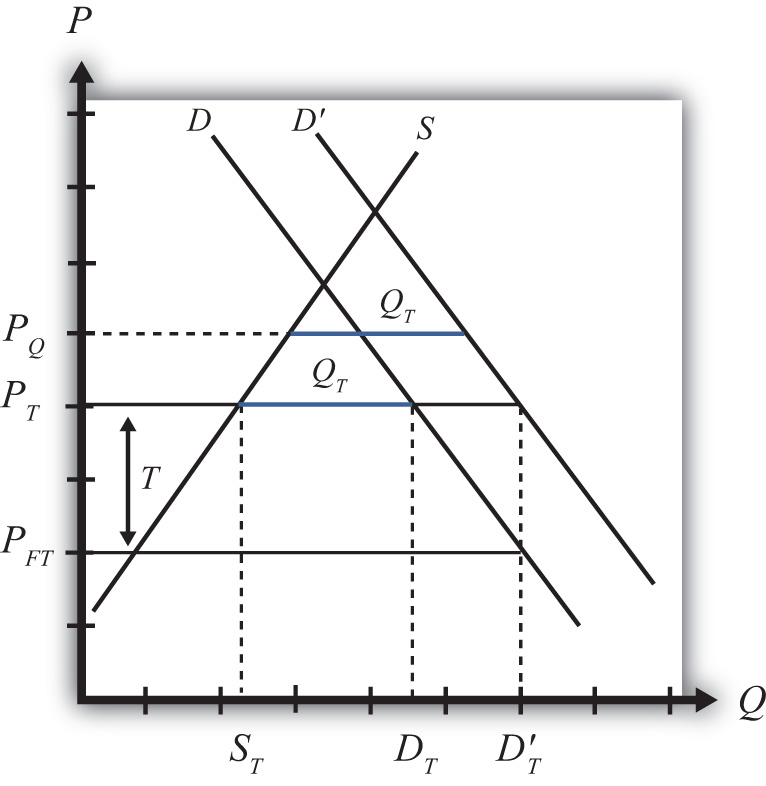

呢兩條點做
可唔可以畫圖解釋比我聽
唔該巴打們
https://saylordotorg.github.io/text_international-economics-theory-and-policy/s10-trade-policy-effects-with-perf.html
An Increase in Domestic Demand
Consider Figure 7.28 "Effects of a Demand Increase", which depicts a small importing country. PFT is the free trade price. If a tariff of T is put into place, the domestic price rises to PT and imports equal DT − ST. A quota set equal to QT (the blue line segment) would generate the same increase in price to PT and the same level of imports. Thus the tariff T and quota QT are said to be equivalent to each other.
Figure 7.28 Effects of a Demand Increase

Next, consider the effects in this market when there is an increase in domestic demand, represented by a rightward shift of the demand curve. A demand increase could arise because of rising incomes in the country or because consumers’ preferences become more favorable to this product.
With a tariff in place initially, the increase in domestic demand will leave the domestic price unaffected. Because this is a small country, the world price does not change and thus the domestic tariff-inclusive price remains at PT = PFT + T. Domestic supply also remains at ST, but demand rises to D′T, causing an increase in imports to D′T − ST.
With a quota in place initially, the increase in domestic demand causes the domestic price to rise to PQ in order to maintain the import level at QT (the higher blue line segment). Domestic supply will rise with the increase in price (not labeled), while domestic demand will fall.
The protective effect of the tariff or quota means the degree to which the domestic producers are protected in the face of the market change. Since the domestic price rises more with the quota in place than with the tariff, domestic producers will enjoy a larger supply and consequently a higher level of producer surplus (not shown). Thus the quota is more protective than a tariff in the face of an increase in domestic demand.




















 推
推